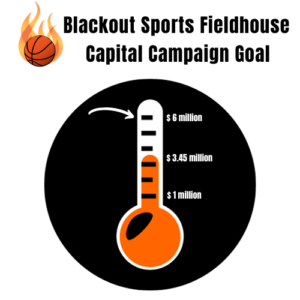Kids and teens today are lonelier than ever, with loneliness becoming an epidemic according to the Surgeon General. While loneliness can affect anyone, research shows that loneliness among kids and teens is at an all-time high. How can parents and caregivers intervene? Experts from our partners at Children’s Hospital Colorado help you learn how to spot loneliness, why it’s on the rise, and how to step in and help the teens in your life.

Thunderstorm safety tips
Thunder is an ominous sound, and even more so if you’re protecting the safety of young athletes outdoors. While summer is in full swing, you should ask yourself: Do I know how to protect myself and others from lightning?
“If you hear thunder, lightning is close,” says Scott McGinn, lead athletic trainer in our Sports Medicine Center.
Lightning awareness should be heightened at the first flash of lightning or clap of thunder, no matter how far away. You should seek a safe structure or location at the first sign of lightning or thunder activity. The existence of blue sky or the absence of rain are not protection from lightning. It doesn’t have to be raining for lightning to strike.
Flash-to-bang for lightning safety
The ‘flash-to-bang’ method is the easiest and most convenient way to estimate how far away lightning is. Lightning always accompanies thunder, even if it’s harder to hear because it’s farther away or there’s other noise in the area. To use the flash-to-bang method, count in seconds from the time you see the lightning to when you hear the clap of thunder. Divide this number by five. That’s how far away (in miles) the lightning is. For example, if you count 15 seconds between seeing the flash and hearing the bang, you can assume the lightning is about three miles away because 15 divided by five equals three.
Suspending activity due to weather
Lightning safety experts suggest that if you hear thunder, begin preparation for evacuation. If you see lightning, suspend activities and head for your designated safe locations. At a minimum, by the time the flash-to-bang is 30 seconds, everyone should leave the athletic site and go to a safe location.
Before any practice or event, the person in charge should check the weather for that area. Know if the National Weather Service (NWS) has issued a thunderstorm “watch” or “warning,” and the signs of developing thunderstorms in the area, such as high winds or darkening skies. A “watch” means severe weather is likely in an area; a “warning” means severe weather has been reported in the area and for everyone to take proper precautions.
Similar to lightning, the point person should check weather forecasts for warmer or colder days. For cold weather, McGinn says that if the temperature is between 10 and 19 degrees Fahrenheit, activity should be limited to 45 minutes. Cancel activities if the temperature is below 10 F. For warmer days, McGinn says to follow weather advisories and use the Heat Index Chart provided by the National Weather Service to get the ‘real feel’ of the outside. And cancel all outdoor sporting activities if the heat index reaches 105 F or higher.
Also, you should identify a specific, safe location during lightning. Designate an adult as the weather watcher and look for signs of threatening weather.
Safe structures and locations during thunderstorms
Safe locations are fully enclosed, substantial buildings. Avoid using the shower or plumbing facilities and contact with electrical appliances during a thunderstorm. If a substantial building is not available, a vehicle with a metal roof and closed windows is a reasonable alternative.
Unsafe locations for thunderstorms
- Small, covered shelters
- Dugouts
- Rain, golf and picnic shelters
- Locations connected to or near light poles
- Towers
- Fences
ALWAYS avoid being at the highest point in the area.
Criteria for a safe return to the practice or game area
Athletes should not return to the practice or game area until at least 30 minutes have passed since the last lightning flash or sound of thunder. Each time lightning is observed, or thunder is heard, the “30-minute clock” resets.
What to do if you are caught in a thunderstorm while hiking or camping
If you’re far from a safe structure or vehicle during a thunderstorm, find the lowest point and move there quickly. Avoid open fields, the top of a hill or a ridgetop. Stay away from tall, isolated trees or other tall objects. If you’re in a forest, stay near a lower stand of trees.
Make sure the place you pick doesn’t flood easily and no water runs through it. On open ground, squat low on something dry (non-metal), keep your feet close together, and make yourself the smallest possible object with the least contact with the ground. Do not lie down!
If someone is struck by lightning, perform prompt cardiopulmonary resuscitation (CPR) and activate the local emergency management system.
Heat and wildfires
Playing sports in high temperatures can cause cramping, dehydration, heat stroke and serious health issues for young athletes. And often with the heat of the summer months, especially in Colorado, comes wildfires that can greatly affect the respiratory system.
Symptoms from a wildfire can last far longer than just the time spent playing outdoors. With particles of chemicals sometimes accompanying smoke, those with asthma or pre-existing conditions should not play their outside sport, and others should follow local guidance to avoid smoke inhalation.
To avoid many of the common symptoms that occur with heat and wildfires, it’s important to:
- Wear loose, breathable clothing
- Drink more water than usual
- Wear sunscreen
- Avoid practice or games during the hottest time of the day and check local guidance for weather alerts
- Wear an N95 mask to protect against smoke inhalation
Cold weather and snow
The dangers of playing sports outside during cold weather and snow may seem obvious, but you could easily overlook some. Although hypothermia and frostbite are the most common, injuries like muscle strains and susceptibility to other diseases or colds can be increased in the cold.
“When it’s cold out, make sure to get a good stretch in and come fully clothed and dressed in layers,” says McGinn.
To avoid many of the common symptoms that occur in cold weather and snow, it’s important to:
- Wear adequate layers and have gear to protect against the cold
- Wear sunscreen
- Take the proper time to warm up and cool down
- Follow guidance for weather alerts and temperature drops
Learn more about weather safety with these resources:
- For further information on lightning safety precautions, check the NWS’ Colorado Lightning Resource and Lightning Safety
- To find out more about general safety tips, read our sports safety articles, or schedule an appointment with our Orthopedics Institute by calling 720-777-6600. We’re happy to consult with parents or referring providers before we see your child at Children’s Colorado.




